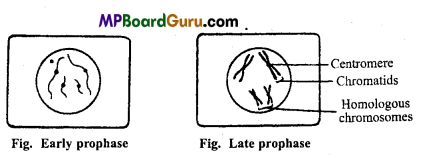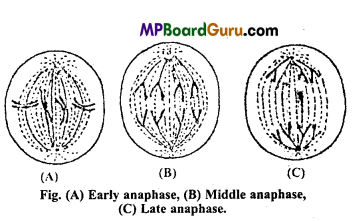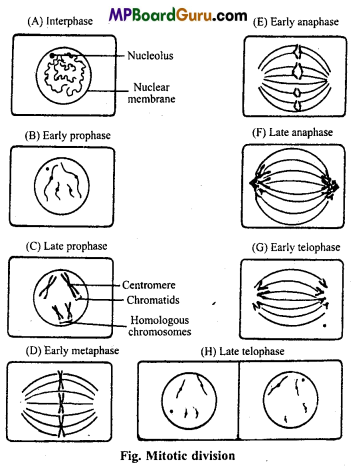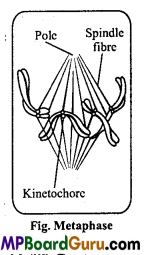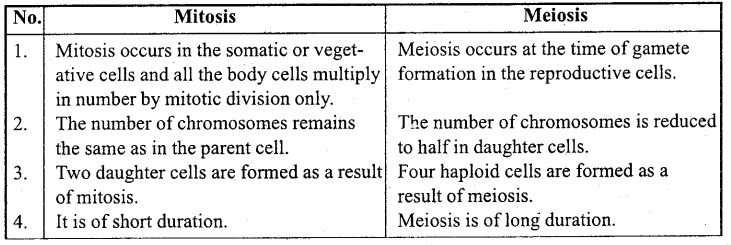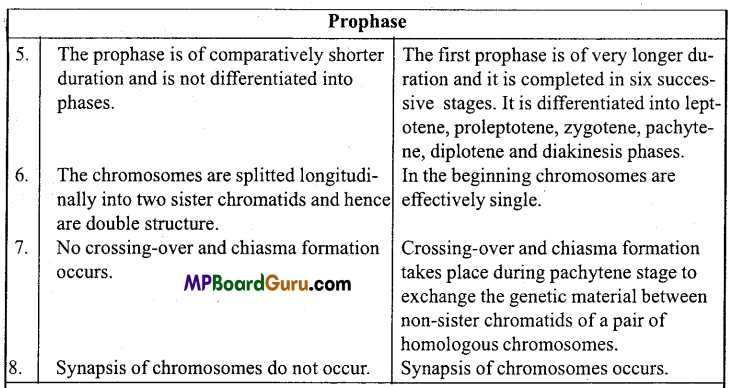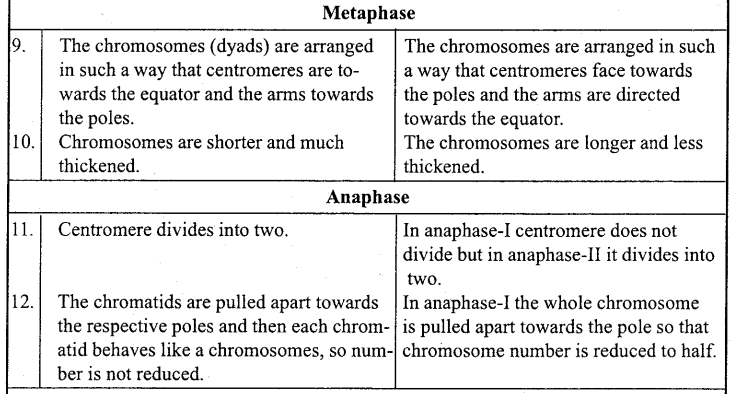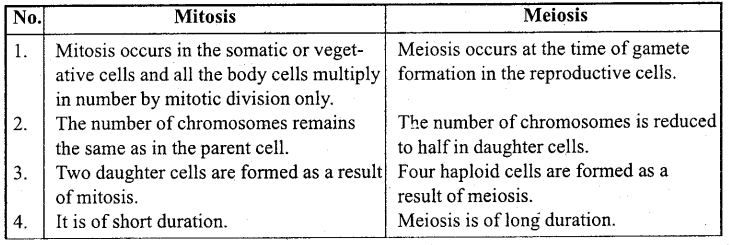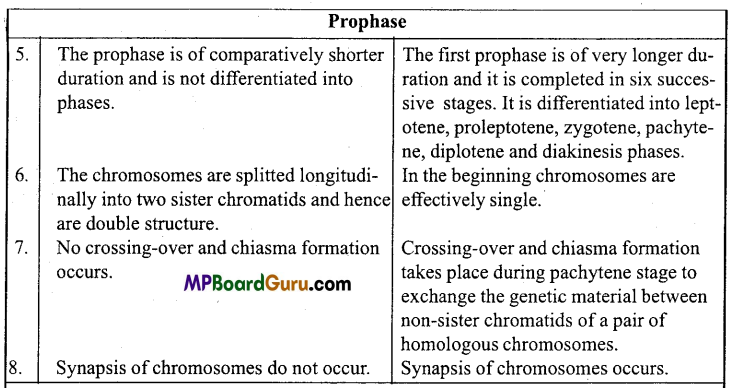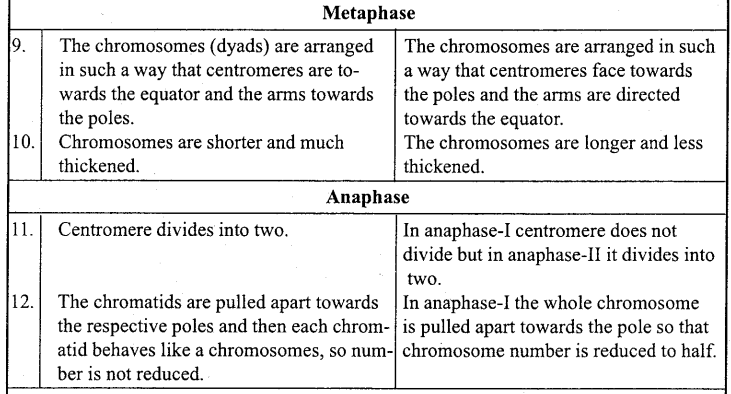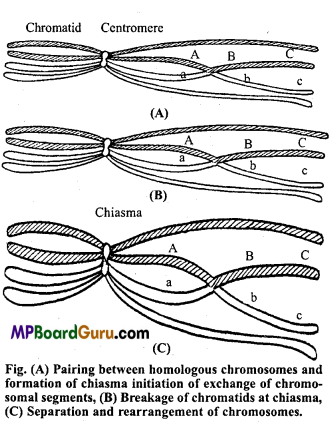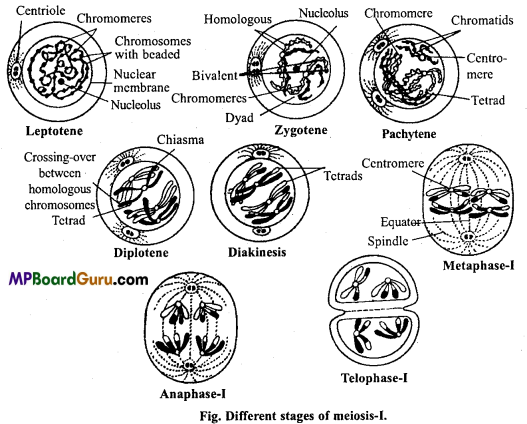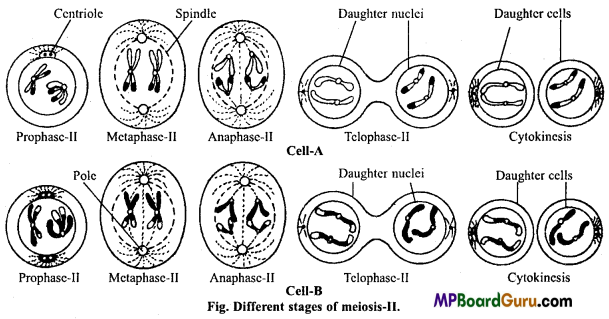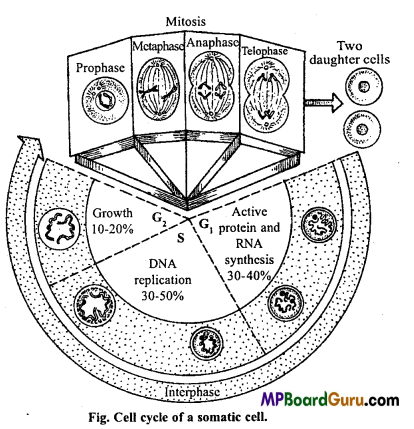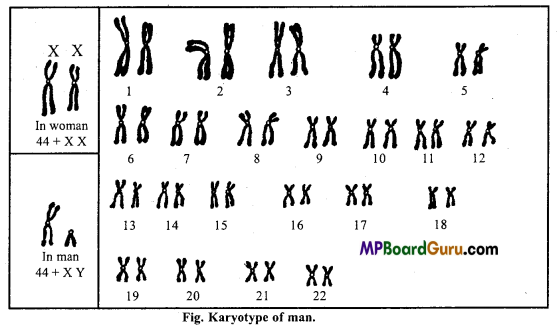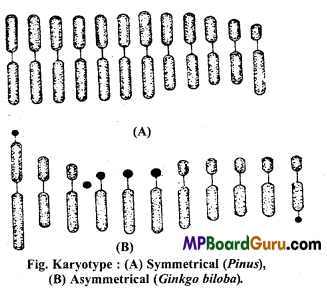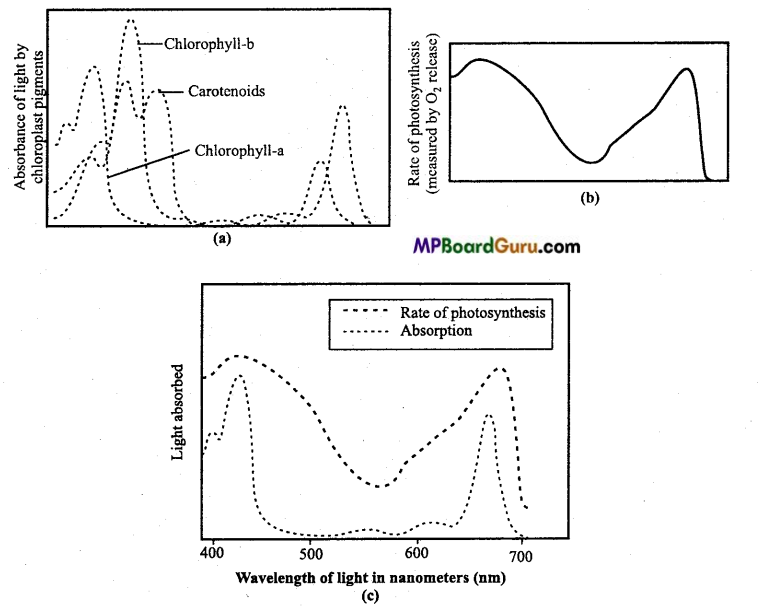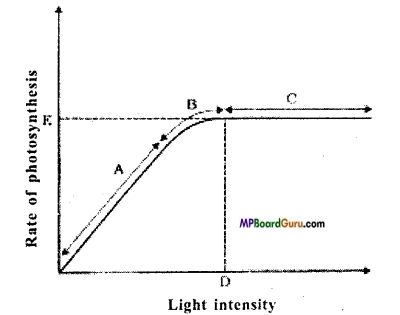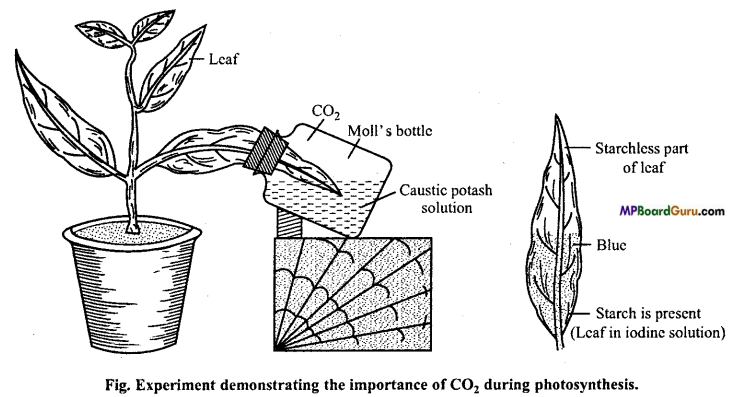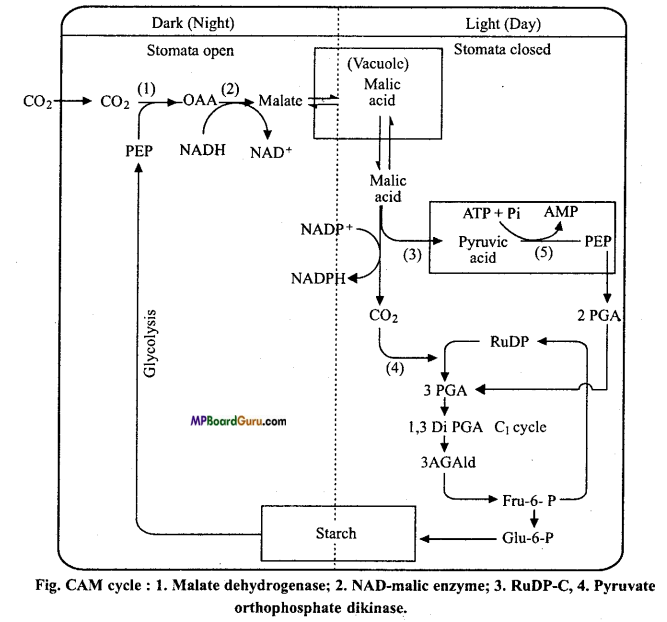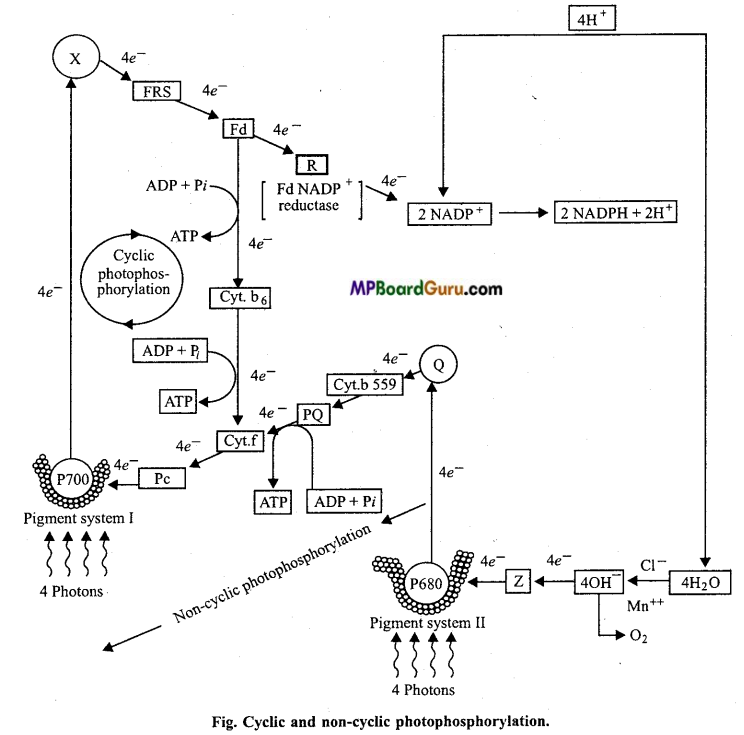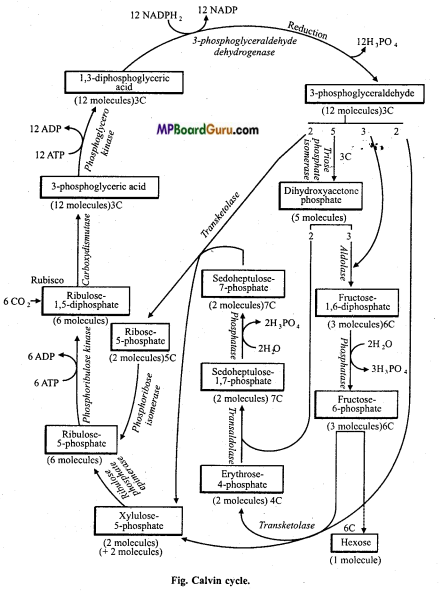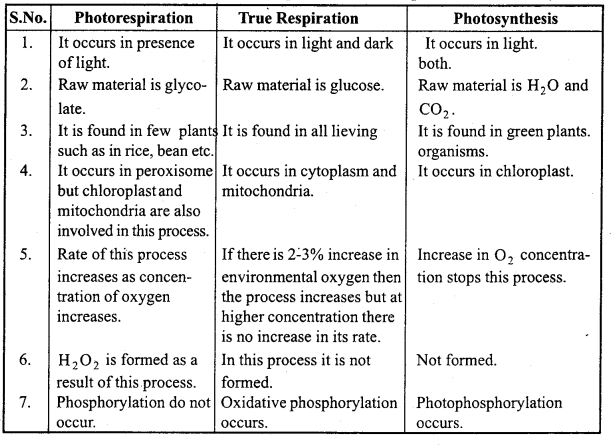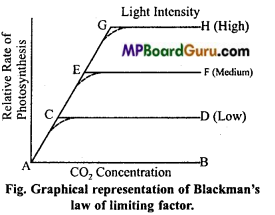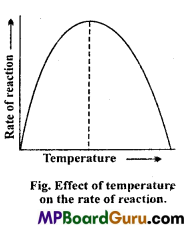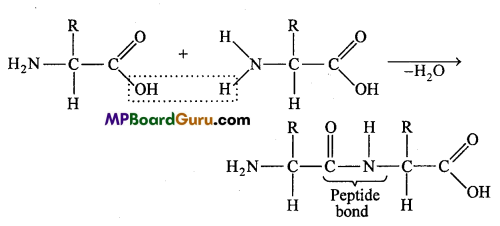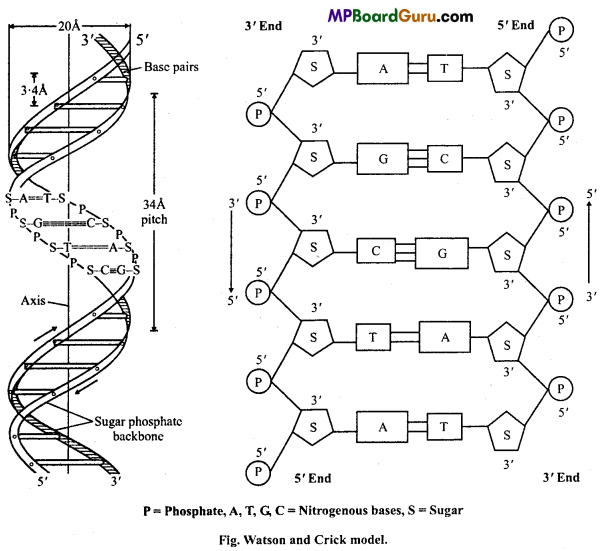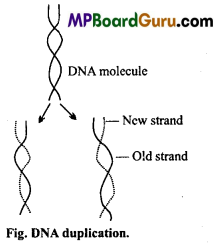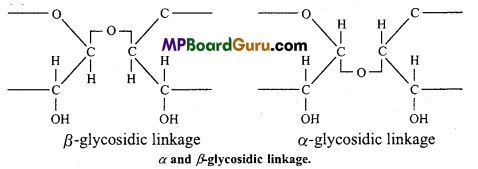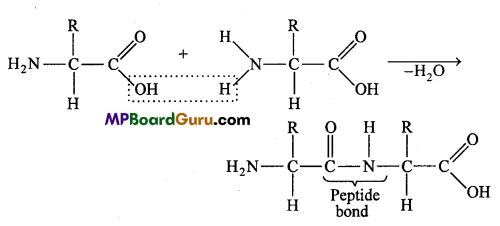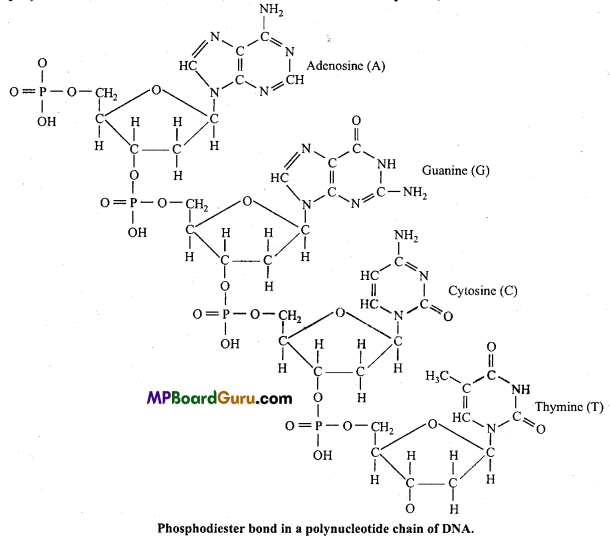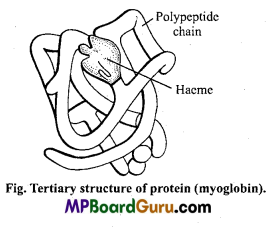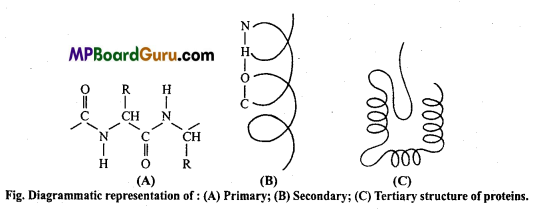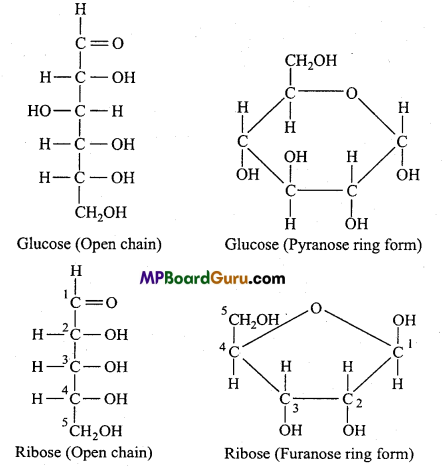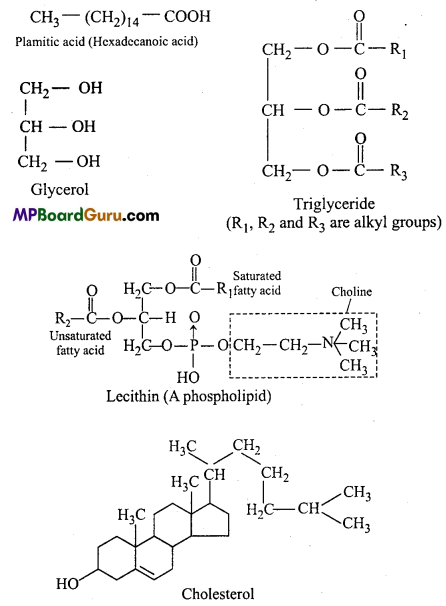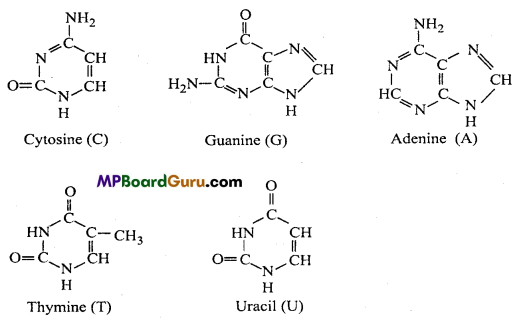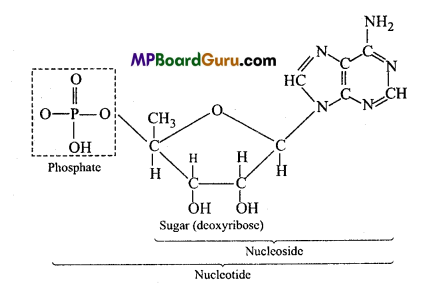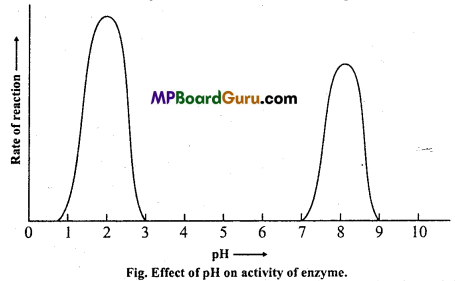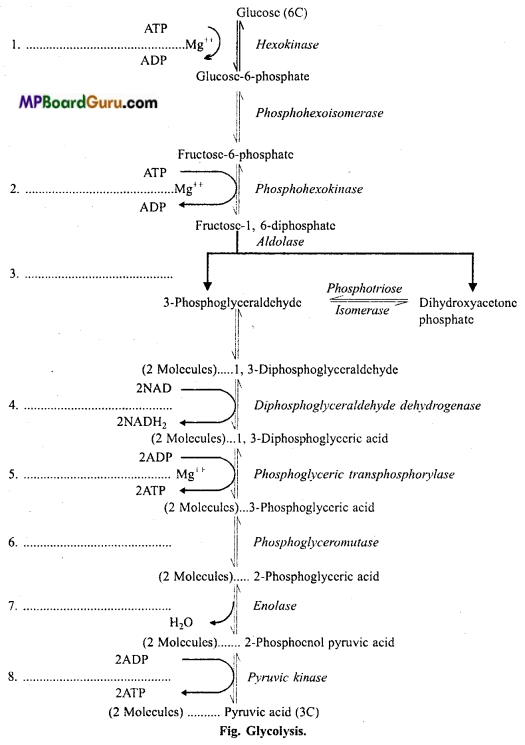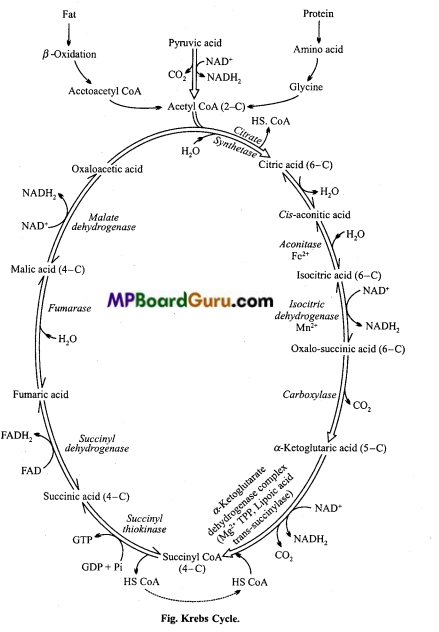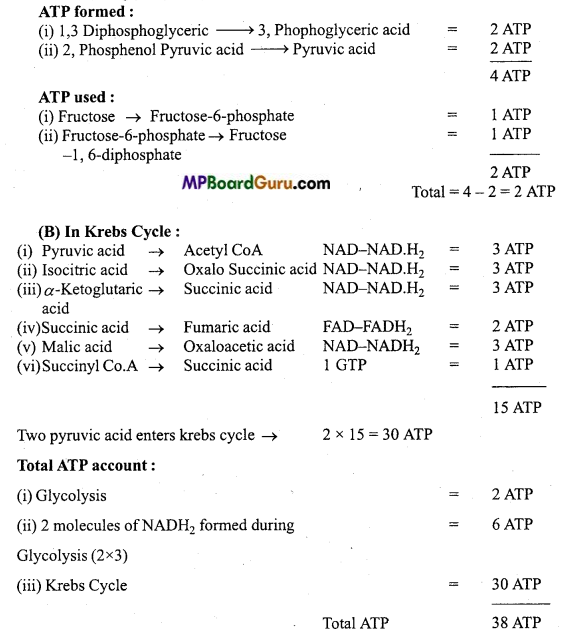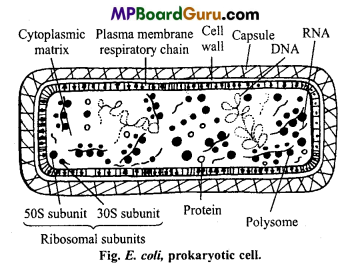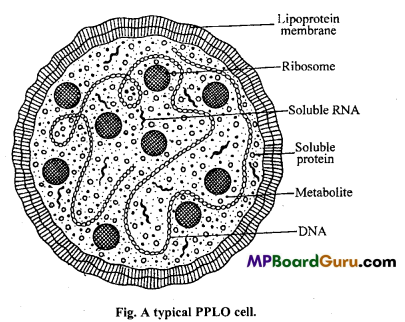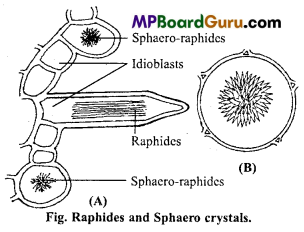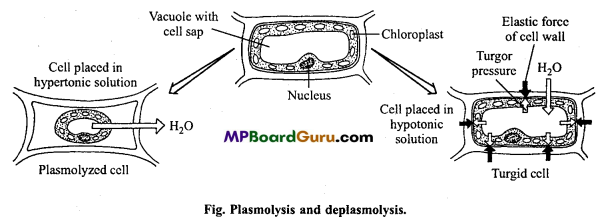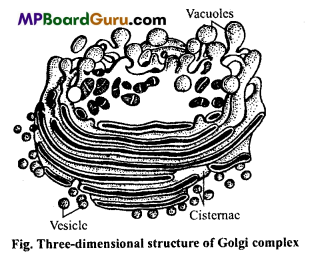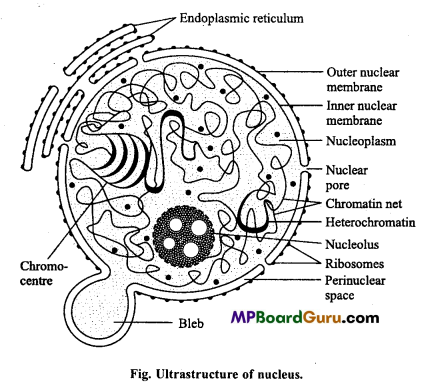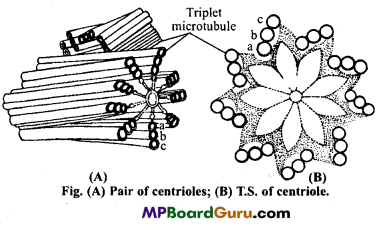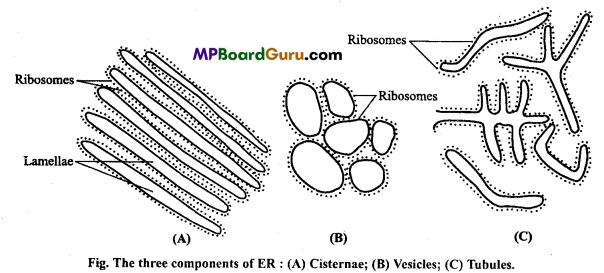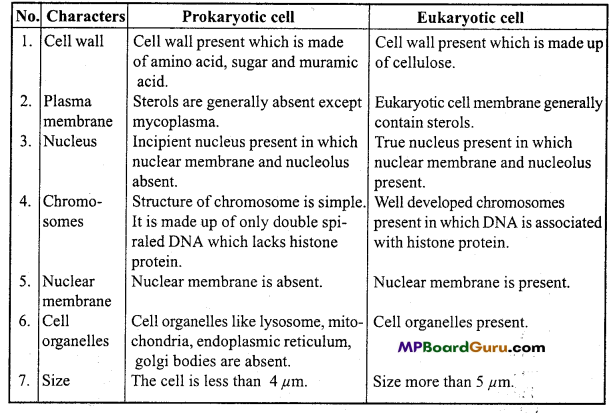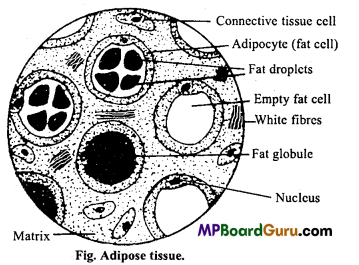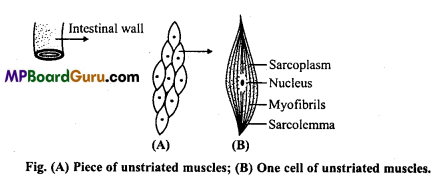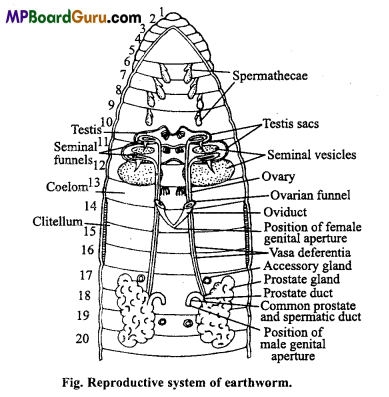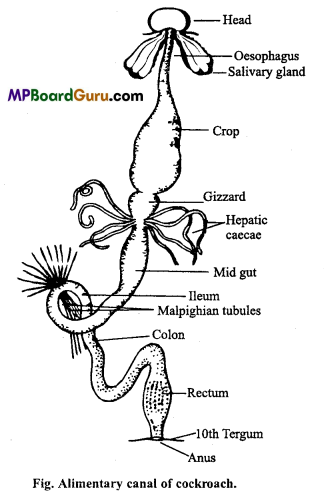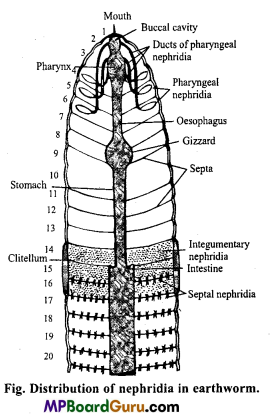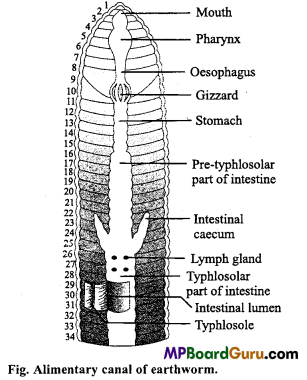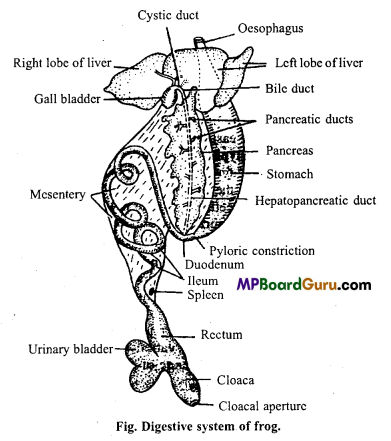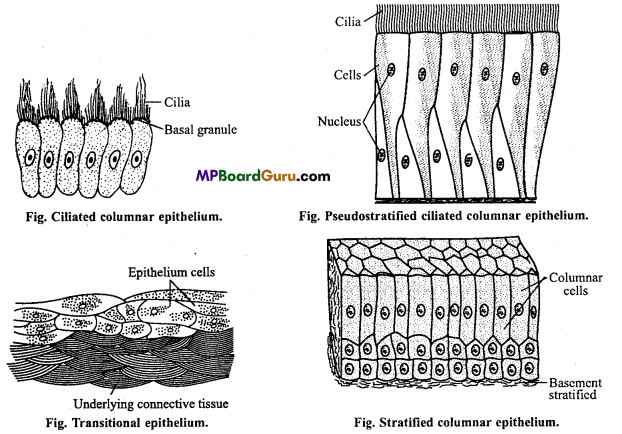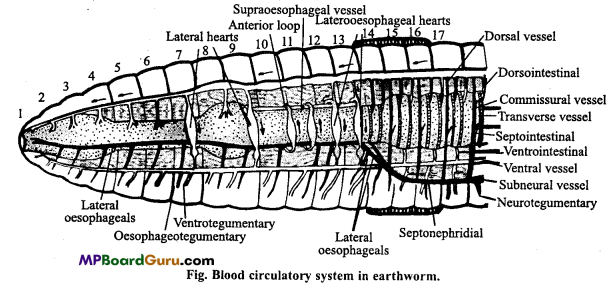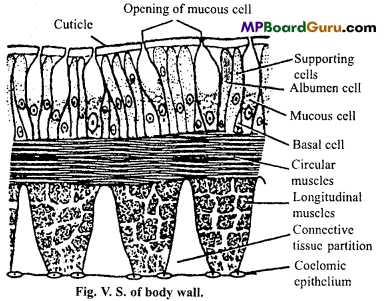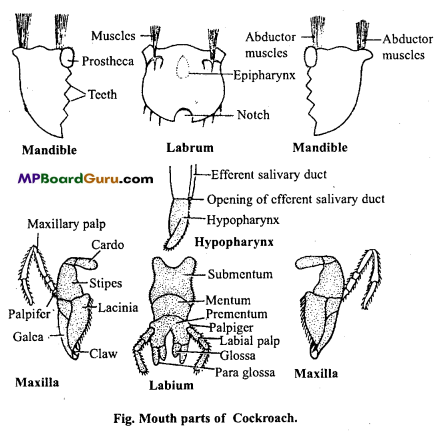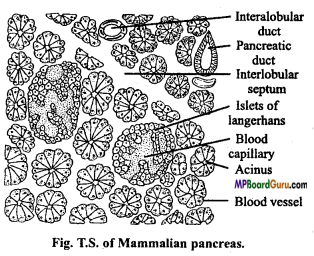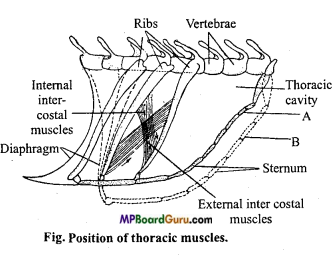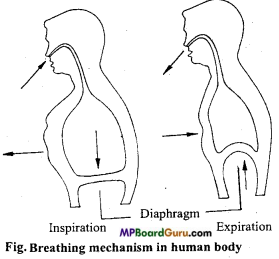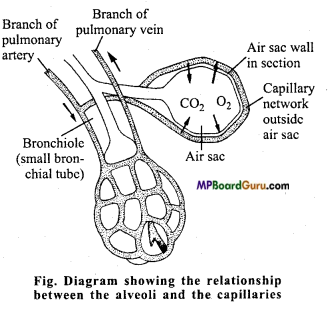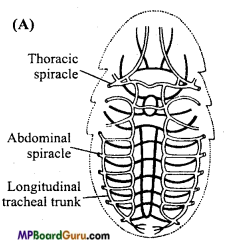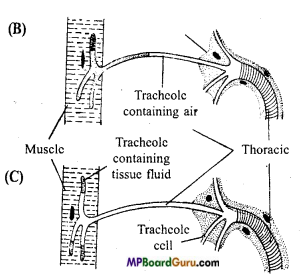Students get through the MP Board Class 11th Biology Important Questions Chapter 12 Mineral Nutrition which are most likely to be asked in the exam.
MP Board Class 11th Biology Important Chapter 12 Mineral Nutrition
Mineral Nutrition Class 11 Important Questions Very Short Answer Type
Question 1.
Write the name of symbiotic bacteria present in the roots of leguminous plant.
Answer:
Rhizobium bacteria are present in the roots of leguminous plant which absorb atmospheric nitrogen.
Question 2.
Write the name of two micronutrients.
Answer:
The two micronutrients present in plants are Manganese (Mn) and Molybdenum (Mo).
Question 3.
Write the deficiency symptoms of potassium.
Answer:
Deficiency of potassium inhibits protein synthesis. Scorching of older leaves is the most important symptoms of trees. The leaf tips and margins show general chlorosis. Shortening of internodes also occurs.
Question 4.
Why nitrogen is essential for growth of plant?
Answer:
Protein is essential for growth of plant and for development of protein nitrogen is essential, so for the proper development of plant nitrogen is very much essential.
![]()
Question 5.
What are the drawbacks of soilless culture?
Answer:
Drawbacks :
- It will be very expensive.
- Limited production will be obtained.
- Crops will never be grown by this method.
Question 6.
What are micronutrients? Give two examples.
Answer:
The mineral elements which are required in very low concentration for the plant growth are known as micronutrient or microelements.
e.g., Zn, Mo, Cl, Mn, B, Cu, etc.
Question 7.
Describe the deficiency symptoms of nitrogen in plants.
Answer:
Deficiency symptoms of nitrogen:
- Yellowing i.e., Chlorosis of leaves, older leaves become yellow first.
- Acceleration in the rate of formation of purple pigment anthocyanin in the leaves which become purple in colour.
- Flowering is delayed or is completely suppressed.
Question 8.
Which pigment is present in the roots of leguminous plants?
Answer:
Leghaemoglobin.
![]()
Question 9.
Write the importance of molybdenum in plants.
Answer:
Molybdenum act as an activator for the enzyme nitrate reductase involved in nitrogen metabolism.
Question 10.
In plants, the organic solutes are transported through which tissue?
Answer:
In plants, the organic solutes are transported through phloem tissue.
Question 11.
What is Mineral nutrition?
Answer:
The utilization of various kinds of absorbed ions by a plant for its growth and development is called as Mineral nutrition.
Question 12.
What are nutrient elements?
Answer:
Elements which are essential for plant growth are called as nutrient elements.
![]()
Question 13.
In study of water culture purity of water and mineral nutrient is essential. Why? (NCERT)
Answer:
In study of water culture purity of water and pure mineral nutrients are essential because plants can absorb only pure water and pure minerals and their essentiality for the plants can be determined correctly. Impure mineral nutrient cannot help to determine essentiality of the minerals for plants.
Question 14.
Explain following With examples: Macronutrients, micronutrients, useful elements, essential elements, toxic elements.
Answer:
1. Macronutrients: Essential elements which are required in large quantity for normal growth and development of plants are called as macronutrients.
e.g. C, H, O, N, P, K, Ca, S, Mg, Fe, etc.
2. Micronutrients: The mineral elements which are required in very low concentration for the plant growth are known as micronutrient or microelements.
e.g., Zn, Mo, Cl, Mn, B, Cu, etc.
3. Useful elements: Some essential elements which are essential for higher plants called as useful elements.
e.g., Na, Si, Ca and Se.
4. Essential elements: Out of approximately 30 elements universally present in the plants, 16 elements are essential for plants, i.e., they require them.
e.g. C, H, O, N, P, K, Ca, S, Mg, Fe, Mn, Zn, B, Cu, Cl, Al.
5. Toxic element: Concentration of any mineral ion which decreases dry weight of plant by 10% is called as Toxic element. It is different for different plants.
e.g. As, Cu, Hg etc.
Question 15.
Give four general importance of mineral salt.
Answer:
Importance of Mineral salt:
- Nutrition of plants: Some minerals like N, P, S, etc. help to produce protein.
- As catalyst: Some minerals act as catalyst in biochemical reactions. e.g. Mn.
- Bodybuilding: Some elements help to produce structural part, such as cell wall of the cell.
- Balancing work: Some mineral elements stop toxic effect of some other elements. e.g., Calcium, Magnesium.
Question 16.
Write difference between Active and Passive absorption.
Answer:
Differences between Active and Passive absorptions
| Active absorption | Passive absorption |
| 1. It requires metabolic energy. | It does not require metabolic energy. |
| 2. It cannot take place in the absence of root. | It can take place even in the absence of root. |
| 3. It is not influenced by transpiration. | It depends upon transpiration. |
| 4. Root cells play an active role, in the absorption of water. | Root cells have no role in the absorption of water. |
Mineral Nutrition Class 11 Important Questions Short Answer Type
Question 1.
Mention the name of any five macroelements and their deficiency symptoms. (NCERT)
Answer:
Macronutrients :
- Nitrogen
- Phosphorus,
- Sulphur,
- Magnesium and
- Calcium.
1.Deficiency symptoms of nitrogen:
- Stunted growth with yellowish-green leaves in young plants.
- Yellowing and drying of older leaves.
- Flowering reduced.
2. Deficiency symptoms of phosphorus :
- Stunted growth.
- The leaves become purple coloured due to excessive anthocyanin.
- Premature leaf falls and necrotic spots on the fruits.
- Vascular tissues less developed.
- Low rate of protein synthesis.
3. Deficiency symptoms of sulphur :
- Plants stunted in growth and flowering delayed.
- Chloroplast becomes pale green in colour.
- Chlorosis of leaves.
- Hard woody stem.
4. Deficiency symptoms of magnesium :
- Interveinal chlorosis or molted chlorosis with green veins.
- Brittleness of the leaves and necrosis.
- Wilting, drying off and dropping of the tips of plant.
- Necrotic patches on the leaves.
5. Deficiency symptoms of calcium :
- Calcium deficiency causes malformation of the younger leaves.
- Chlorosis also occurs along the margins of younger leaves.
![]()
Question 2.
Describe essentiality of potassium in plants and give its deficiency symptoms.
Answer:
Potassium: It is essential for activating enzymes concerned in the synthesis of polypeptides from amino acids and is also essential for the process of photosynthesis, and respiration.
Deficiency symptoms: Deficiency of potassium inhibits protein synthesis. Scorch-ing of older leaves is the most important symptom on trees. The leaf tips and margins show general chlorosis. Shortening of internodes also occurs.
Question 3.
All elements are not essential for plants. Explain it. (NCERT)
Answer:
All elements absorbed by the plants are not essential.
Criteria for Essentiality: According to Arnon and Stout, 1939, the criteria for essentiality of mineral elements are as follows :
- The plant is unable to grow normally and complete its life cycle, in the absence of the elements.
- The element is specific and cannot be replaced by another element, however close it may be in the periodic table.
- The element plays a direct role in the metabolism of the plant.
Question 4.
Give atleast essential elements. Describe them and give their deficiency symptoms. (NCERT)
Answer:
1. Sulphur: It is absorbed in the form of sulphate ions from the soil. It is important constituent of some amino acids. It is also essential for the synthesis of sulphur con¬taining vitamins like biotin, thiamine and coenzyme A. Disulphide bridge (S-S) plays an important role in determining protein structure and sulphydryl groups (SH) are necessary for the activity of many enzymes.
Deficiency symptoms :
- Reduced leaf, stunted growth, a general chlorosis, followed by the production of anthocyanin pigments in some species. The younger leaves are affected first.
- Inward rolling of leaf margins and tips.
- Due to development of sclerenchymatous tissue, stem becomes hard.
2. Phosphorus: It is an important constituent of phospholipids, nucleic acids and various coenzymes like NAD, NADP and ATP. It is absorbed from soil in the form of phosphate. Phospholipids are the constituents of membranes. NAD, NADP and ATP are required for oxidation-reduction reactions of photosynthesis, respiration and fat metabo-lism. ATP is the chief source of energy.
Deficiency symptoms :
- Premature leaf fall.
- Formation of necrotic areas on leaves and fruits.
- Leaves become dark blue in colour.
- The growth of roots and shoots is completely restricted.
3. Calcium: It is a constituent of the middle lamella, in which it is present in the form of calcium pectate. It helps to stabilize the structure of the chromosomes.
Deficiency symptoms: Calcium deficiency causes malformation of the younger leaves. Chlorosis also occurs along the margins of the younger leaves.
4. Magnesium: It is one and only constituent of the chlorophyll molecule. It acts as activator for many enzymes in phosphate transfer reactions particularly in carbohydrate metabolism and nucleic acid synthesis. It is also believed to be an important binding agent in ribosomes, where protein synthesis takes place.
Deficiency symptoms: Magnesium deficiency results in extensive interveinal chlorosis of leaves. The older leaves are affected first. Ultimately, leaves develop necrotic spots.
5. Iron: It is essential for chlorophyll synthesis. It is important constituent of ferredoxin, flavoprotein, iron-porphyrin, catalase, peroxidase and cytochromes. Iron is primarily concerned in the formation of chloroplast protein in the leaves.
Deficiency symptoms: Pronounced interveinal chlorosis occurs due to deficiency of iron.
Question 5.
Which statement is right out of following if it is wrong, give reason : (NCERT)
(a) Deficiency of boron causes formation of sclerenchymatous axis.
(b) AH elements present in the cell are essential.
(c) Nitrogen is not an essential element for plants.
(d) It is very easy to determine essentiality of micronutrients in plants because it is taken in very less quantity.
Answer:
(a) Wrong, because deficiency of Boron effect on activity of membrane, pollen germination, cell elongation, cell differentiation and transport of carbohydrates, (b), (c) and (d) are right statements.
Question 6.
If plant shows deficiency symptoms of two elements how will you determine deficient element practically? (NCERT)
Answer:
Deficiency symptoms of different elements are different. By providing particu¬lar deficient element if deficiency symptoms eradicates then deficient element can be confirmed.
Question 7.
Why deficiency symptoms are observed in newly formed parts of some plants whereas in some other plants it is observed in mature part? (NCERT)
Answer:
Deficiency symptoms in plant parts depends on mobility of elements. Deficiency symptoms are observed in old tissue first as compared to new tissues of young part. For example, symptoms of deficiency of nitrogen, potassium and magnesium are observed in old leaves first of all.
Biomolecules of old leaves decomposes and element move towards the new leaves.
When elements are non-mobile then they cannot reach to young parts thus deficiency symptoms are observed in new leaves.
Question 8.
Describe passive absorption of minerals in plants. (NCERT)
Answer:
Passive Absorption: In this method, the movement of minerals into the cells or tissue takes place without the expenditure of energy on the part of absorbing cells. This is a purely physical phenomenon and takes place in many ways.
1. Diffusion: It can be observed by first placing a plant cell or tissue in a medium of high concentration of salt and then transferring it into lower salt concentration. During this transfer, some of the ions taken up will diffuse into the lower salt concentration from the higher salt concentration, until the concentration of both the solutions get balanced. The whole process is unaffected by temperature or metabolic inhibitors.
2. Mass flow: Plants which have a higher rate of transpiration contain comparatively high concentrations of minerals. It is well-known that increase in transpiration is accompanied by increased absorption of ions from the soil. In this way the ions are absorbed by the plants in a mass flow due to the higher rates of transpiration.
3. Donnan equilibrium: According to Donnan, cells contain some fixed ions which do not exert any diffusion pressure. Therefore, ions similar in charge to that of fixed ions, move inwardly through diffusion. Oppositely charged ions also pass inwardly to balance them. Such a diffusion continues till the multiple of cations and anions inside cells becomes equal to that of ions present in outside medium.
![]()
Question 9.
Describe process of formation of Root nodules. (NCERT)
Answer:
Formation of Root nodule: It is a combined activity of roots of nutrient plants (Leguminous plants) and Rhizobium bacterias.
Steps of formation of Root nodules are as follows :
First of all Rhizobium bacteria multiply and are collected surrounding the roots of leguminous plants and get connected to root hair cells.
Root hair turns and bacteria attack them. An infected thread appears which carry Rhizobium bacteria to the cortex, where they begin to produce nodule. Now bacterias are released from the thread and enters into the cells which help for differentiation of nitrogen fixation cells. In this way, root nodules are formed. Leguminous plants provide nutrients to bacteria and Rhizobium bacteria provides nitrogenous compounds to plant by nitrogen fixation.
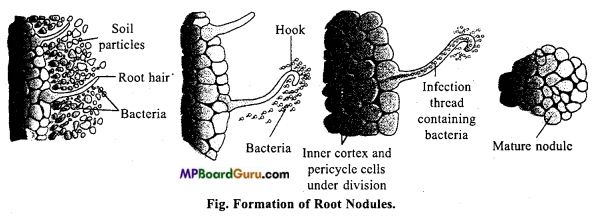
Mineral Nutrition Class 11 Important Questions Long Answer Type
Question 1.
What are the materials required for atmospheric nitrogen fixation? Give their role in Nitrogen fixation. (NCERT)
Answer:
Rhizobium bacteria shows symbiotic relationship with the roots of leguminous plants like pea, moong, gram, beans etc. Symbiosis occurs in the root nodules. Rhizobium bacteria obtains food from the leguminous plants and Rhizobium bacteria help for nitrogen fixation and provides nitrogenous compounds to the plants.
Symbiotic Nitrogen fixation: The process of nitrogen fixation is done by nitrogen-fixing bacterias like Rhizobium, Cyanobacteria, nitrogen-fixing fungi etc.
Mechanism of Nitrogen fixation: Following enzymes and materials are required for nitrogen fixation:
- Nitrogenase and Hydrogenase enzymes.
- Leghaemoglobin: It protects the enzyme from oxygen.
- One non-haem iron protein: e.g. Ferredoxin: It is an electron carrier.
- Hydrogen donor substances like: NADPH2, FMNH2, Pyruvate, Sucrose, Glucose etc.
- Energy compound ATP.
- Cofactor like TPP (Thiamine pyrophosphate), CoA, inorganic phosphate, Mg++ etc.
- Co and Mo.
- A compound to fix ammonia produced by reduction of nitrogen.
Following are the steps of natural nitrogen fixation:
1. Reduction of molecular nitrogen:


Question 2.
What is Hydroponics? Give its uses.
Answer:
Hydroponics (Soilless culture): Large- scale cultivation of plants in water culture or soilless culture is known as hydroponics. It was discovered by Prof. W. F. Gariak in 1929. The plants are grown in large, shallow pots which are full of nutrient solutions. The tubs or tanks are covered with wire netting to provide support to the seedlings. The solution is aerated at regular intervals by means of an inlet tube.
There are certain advantages and disadvantages of this technique.
Uses:
- Possibility to provide desirable nutrient environment.
- Regulation of pH of the nutrient solution conductive to specific crop.
- It is possible to replace the nutrient, so more healthy plant as compared to soil culture can be obtained.
- On the roof of multistoried buildings of metropolitan cities, vegetables and fruits may be produced in large scale.
- Ripening time of fruit is less in soilless culture.
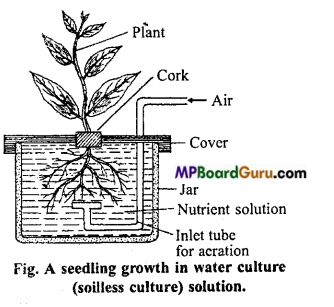
Question 3.
Give an experiment to demonstrate the essentiality of minerals required by plants.
Answer:
Essentiality of minerals required by plants can be demonstrated by using a normal culture medium such as Sach’s culture solution. Components of this solution are as follows:
Sach’s culture solution :

This experiment is performed to ascertain the role of individual elements in the normal growth and development of plants and the effect produced by their deficiencies. In water culture (solution culture) experimental plants are grown in a medium, the chemical composition of which is known and kept under control.
Method: Take seven wide-mouthed bottles of neutral glass of the same size. Clean and thoroughly sterilize them with nitric acid and distilled water. Fit each bottle with a cork containing two holes; one in the centre for introducing a seedling and the other at the side for a bent glass tube for aerating the culture solution. Make a slit running from the central hole to the rim of the cork for readily taking out the seedling.
Now, prepare a normal culture solution and pour it into the first bottle. Then, prepare six other solutions from which omit by turn Mg, Ca, Fe, K, P and N, and designate them as Mg, Ca, Fe, K, P and N, and fill the remaining seven jars with these solutions. Take seed¬lings of same kind and more or less same size. Introduce a seedling in each bottle through split cork. Wrap the bottles with black paper and expose them to light. Make arrangement
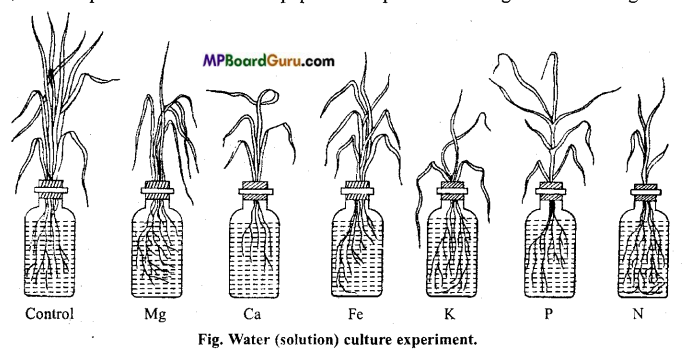
for proper aeration of roots. Renew the culture solution fortnightly. Observe carefully the symptoms of plants appeared due to the deficiency of various elements.
![]()
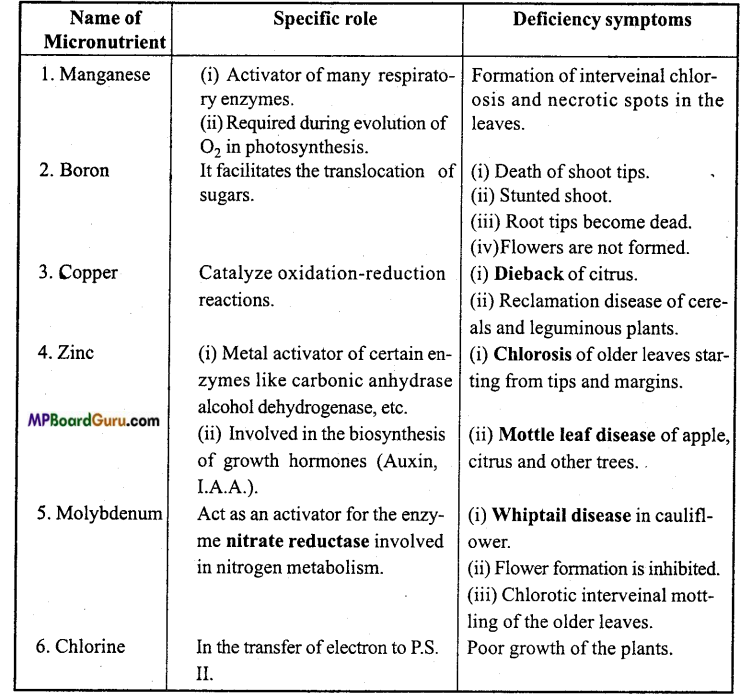
Question 4.
Name any five micronutrients and give their specific role and deficiency symptoms.
Answer:
Nutrient elements which are required in traces for normal growth and development of the plants are called as Micronutrients.
e.g. Manganese, Boron, Copper, Zinc, Molybdenum and Chlorine. Their specific role and deficiency symptoms are as follows :
Mineral Nutrition Class 11 Important Questions Objective Type
1. Choose the correct answers:
Question 1.
In Nitrogen cycle nitrifying bacteria convert:
(a) NH3 into N2
(b) Nitrogen fixation
(c) NH3 into NO2
(d) Amino acid into NHr
Answer:
(c) NH3 into NO2
Question 2.
Function of Zinc is :
(a) Production of Chlorophyll
(b) Production of IAA
(c) Closing of stomata
(d) Oxidation of Carbohydrates.
Answer:
(b) Production of IAA
Question 3.
Symptoms of destruction of Chlorophyll is called as :
(a) Necrosis
(b) Chlorosis
(c) Stunted shoot
(d) Rotting.
Answer:
(c) Stunted shoot
Question 4.
Plants which can prepare their own food are called as :
(a) Heterotrophs
(b) Autotrophs
(c) Mixotrophs
(d) None of these.
Answer:
(b) Autotrophs
![]()
Question 5.
Falling of premature leaves, flowers and fruits is called as :
(a) Abscission
(b) Dieback
(c) Stunted
(d) Hypertrophy.
Answer:
(a) Abscission
Question 6.
In which form ‘C’ is available to plants :
(a) ‘C’ element
(b) CO2
(c) CO3
(d) Amino acid.
Answer:
(b) CO2
Question 7.
Which element is required by the plants in large quantity :
(a) N
(b) P
(c) Ca
(d) S.
Answer:
(a) N
Question 8.
Which element out of following is not macroelement:
(a) P
(b) K
(c) Mg
(d) Mo.
Answer:
(d) Mo.
![]()
Question 9.
Hydroponics name was given by :
(a) Knop and Sach
(b) Hoagland
(c) Gariak
(d) Sach.
Answer:
(c) Gariak
Question 10.
Soil element available to plant is called as :
(a) Mineral salt
(b) Micro salt
(c) Nutrient substance
(d) None of these.
Answer:
(a) Mineral salt
Question 11.
How much percentage of dry weight of plants is formed by Carbon, Hydrogen and Oxygen
(a) 10-15%
(b) 15-25%
(c) 25-35%
(d) 85-95%.
Answer:
(d) 85-95%.
Question 12.
Element required for synthesis of IAA :
(a) B
(b) Cu
(c) Zn
(d) Mo.
Answer:
(c) Zn
Question 13.
Active absorption of minerals in plants depends on :
(a) Availability of O2
(b) Light
(c) Temperature
(d) Availability of CO2.
Answer:
(a) Availability of O2
Question 14.
Element which is not essential for the plants out of the following is :
(a) Iron
(b) Magnesium
(c) Lead
(d) Phosphorus.
Answer:
(c) Lead
![]()
Question 15.
Trace element out of following is :
(a) Ca
(b) Mg
(c) C
(d) Cu.
Answer:
(d) Cu.
2. Fill in the blanks:
1. Monotropa is an example of ………………………………… plant.
Answer:
Saprophyte
2. Orobanche is an example of ………………………………… plant.
Answer:
Total root parasite
3. Zn, Cu, Mn, B, Mo and Cl are ………………………………… elements.
Answer:
Micro
4. Extensive interveinal Chlorosis is caused due to deficiency of ………………………………… .
Answer:
Mg
5. Element act as activator for the enzyme nitrate reductase is ………………………………… .
Answer:
Mo
6. Rhizobium is a ………………………………… nitrogen fixing bacteria.
Answer:
Symbiotic
7. ![]()
Answer:
2HNO2
8. ……………………………….. element participates in various metabolic activities of plant.
Answer:
Essential
9. Tetra-pyrrol porphyrin ring of chlorophyll has ………………………………… element at the centre.
Answer:
Mg
10. Lack of ………………………………… causes the absence of glands in the roots of leguminous plants.
Answer:
Boron
11. Rhizobium is found in the glands of the leguminous plants situated at ………………………………… .
Answer:
Roots
12. The element which are required for the growth of plants are called ………………………………… element.
Answer:
Essential
13.‘Whiptail disease’ in cabbage is due to deficiency of ………………………………… .
Answer:
Molybdenum.
![]()
3. Match the following:
(A)
| Column ‘A’ | Column ‘B’ |
| 1. Drosera | (a) Minor trace element |
| 2. Dry weight | (b) Hydroponics |
| 3. Zn, copper | (c) Critical element |
| 4. Tank cultivation | (d) Plant ash |
| 5. NPK | (e) Insectivorous. |
Answer:
1. (e) Insectivorous.
2. (d) Plant ash
3. (a) Minor trace element
4. (b) Hydroponics
5. (c) Critical element
(B)
| Column ‘A’ | Column ‘B’ |
| 1. K | (a) Nitrogen metabolism |
| 2. Mg | (b) Photolysis of water |
| 3. Mo | (c) Amino acid |
| 4. Mn | (d) Stomatal movement |
| 5. S | (e) Chlorophyll. |
Answer:
1. (d) Stomatal movement
2. (e) Chlorophyll.
3. (a) Nitrogen metabolism
4. (b) Photolysis of water
5. (c) Amino acid.
(C)
| Column ‘A’ | Column ‘B’ |
| 1. Cuscuta | (a) Symbiotic |
| 2. Loranthus | (b) Total root parasite |
| 3. Orobanche | (c) Insectivorous |
| 4. Dionaea | (d) Total stem parasite |
| 5. Lichen | (e) Partial stem parasite. |
Answer:
1. (d) Total stem parasite
2. (e) Partial stem parasite.
3. (b) Total root parasite
4. (c) Insectivorous
5. (a) Symbiotic
![]()
4. Answer in one word:
1. Write two mineral element essential for production of chloroplast.
Answer:
Mg and Fe
2. Name the pigment found in the root nodule of leguminous plant.
Answer:
Leghaemoglobin
3. Full form of NPK is.
Answer:
Nitrogen, Phosphorus, Potassium
4. Name the enzyme induce Nitrogen fixation.
Answer:
Nitrogenase
5. Name one free-floating aquatic insectivorous plant.
Answer:
Utricularia
6. Name the process in which roots of the plants are kept in nutrient solution for plant growth.
Answer:
Hydroponics
7. Deficiency of which element causes abscission of premature leaves.
Answer:
Phosphorus
8. Name the root of the Cuscuta plant which penetrate into the body of host plant.
Answer:
Haustorial root
9. Name the macroelement which forms structural component of plant body.
Answer:
Carbon
10. From where plants obtain hydrogen.
Answer:
Water
